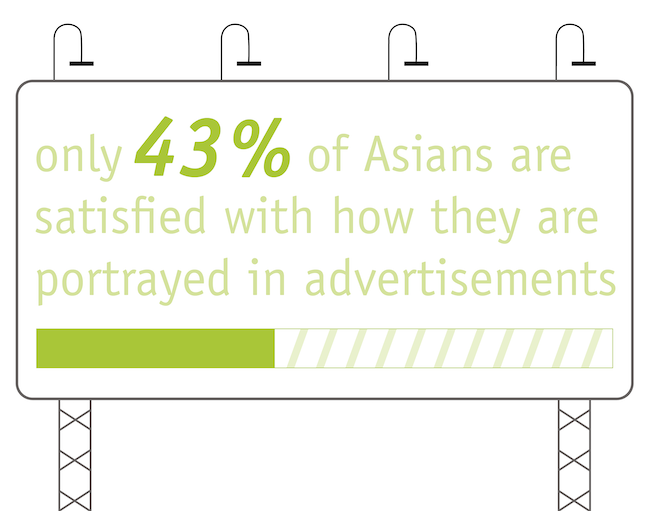Understanding the diverse needs and desires of Asian Americans
Editor’s note: Sudipti Kumar is Collage Group’s director of multicultural insights.
The Asian American community is a growing and affluent segment of the American population, with 19 million individuals identifying as Asian or Native Hawaiian/Pacific Islander. Although there are economic disparities within the segment to be mindful of, this demographic boasts the highest average income among racial and ethnic groups in the United States. And their purchasing power has significantly grown over the past decade.
Despite their economic influence, only 43% of Asians are satisfied with how they are portrayed in advertisements, the lowest of any racial and ethnic segment. Brands and marketers are missing out on a significant opportunity by not appealing to this community.

To better connect with this diverse group, client-side researchers should explore the motivations, behaviors and outlook of the Asian American population. The largest sub-segments of Asians in America are Chinese, Indian and Filipino Americans, and Asian Americans also hail from many other countries including Korea, Japan and Vietnam. Having this knowledge of where Asian Americans come from is invaluable, but it’s only a starting point. From here, insights professionals must examine the shared values and attitudes of this important segment.
Are brands honoring the diversity within the Asian American consumer segment?
Because the Asian American segment is so diverse, there are many different languages and country of origin traditions to consider. Indeed, the term “Asian American” is relatively new and came about to bring together different groups of Asian descent under one, larger umbrella. Since then, the term Asian American is often used to collectively describe the segment. However, the term should not be used to obscure the crucial differences across religion, language and culture that characterize Asia – the world’s largest and most populous continent.
Thus, brands should seek to understand that while Asian Americans have shared life experiences by virtue of Asian origin, they also have unique country-of-origin traditions. Honoring the segment’s diversity and understanding what is shared can help brands to resonate deeply. For example, having knowledge of the various passion points of Asian Americans is vital. Many of the brands that successfully connect with this segment recognize that, for example, many Asian Americans appreciate showcasing their identity through their unique fashion and style and consider themselves avid gamers. When these insights and other Asian American interests are woven into marketing efforts, brands stand a better chance of attracting Asian American consumers.
Two examples of companies successfully marketing to Asian American consumers
Insights leaders and marketers alike should take cues from companies, Costco and Microsoft. Both companies have tremendous support among Asian consumers. In this section, I will share a high-level look at each.
Costco offers bulk merchandise at low cost-per-unit rates, which meets the needs and aspirations of many Asian American consumers who often live in larger households. In fact, 14% of Asian Americans live in a multigenerational household, compared to just 3% of the total population. Costco has also increased the availability of Asian products in its stores, making it a one-stop-shop for the segment and thus driving relevancy. Furthermore, Costco's commitment to working with minority-owned suppliers makes it worthy of trust, which can be seen through the success of Fly By Jing, a Sichuan Chili Crisp product launched in Costco by its founder Jing Gao.
Additionally, Costco’s business model of bulk items for a low-price, fits neatly with the Asian segment’s penchant for thoughtful spending. This demographic is known to be both price-sensitive and to prioritize value.
Similarly, Microsoft, has proven that it values diversity, protects data privacy and drives the use of innovative technology – all topics that resonate extremely well with the Asian American consumer. Microsoft’s cutting-edge product offerings are a perfect fit for Asian Americans’ interest in dynamic multidevice connectivity. Satya Nadella, the CEO of Microsoft, has also shown a commitment to diversity and inclusion, which is very important to Asian American consumers.
Addressing discrimination and supporting Asian Americans: Tips for brands
Another key issue that resonates with the Asian American community is the COVID-19 pandemic. The community has been unfairly targeted and subjected to xenophobia and racism since the pandemic’s onset. Higher rates of discrimination tragically continue even today. Brands and marketers can connect with this demographic by addressing this issue and taking a stand against discrimination. For instance, brands can pledge donations to organizations that support Asian Americans or those that feature Asian American health care workers in advertisements.
There has also been a rise in violence against the Asian American community, particularly since the start of the COVID-19 pandemic. However, the segment has come together in a variety of ways to show their strength and community ties. In New York City, a group of Chinese Americans came together to help found the Guardian Angels, a group with a goal to support vulnerable people of Asian descent who could be the target of hate crimes. Brands and marketers can recognize the community-based efforts Asian Americans undertake to address discrimination and speak to their desire to support one another through difficult times.
If client-side researchers are successful in appealing to the Asian demographic, they can also be effective in appealing to allies of the community. There are a host of consumers who are not Asian American but are very supportive of the Asian American community. Brands and companies that champion Asian Americans and make genuine strides to uplift the community will be rewarded by a multitude of other consumers, including the Hispanic and Black segments, as well as Gen Z, who are inherently much more diverse and aware of supporting other communities than other generations.
Why brands must consider nuances in Asian American subgroups
While it’s important to recognize the broad cultural values and characteristics that Asian Americans may share, it’s equally important to understand that within the many different Asian American subgroups, there are unique cultural traditions, values and experiences. Chinese Americans, Indian Americans and Japanese Americans can have vastly different beliefs and customs, despite all falling under the umbrella of “Asian American.” Brands and researchers should take the time to understand these nuances and tailor their approach accordingly.
By taking the time to understand the diverse needs and desires of Asian Americans, client-side researchers and brand teams will be positioned to create authentic and effective campaigns. Acknowledging the specific interests, values and experiences of this community will build trust, foster loyalty and ultimately drive business growth.
